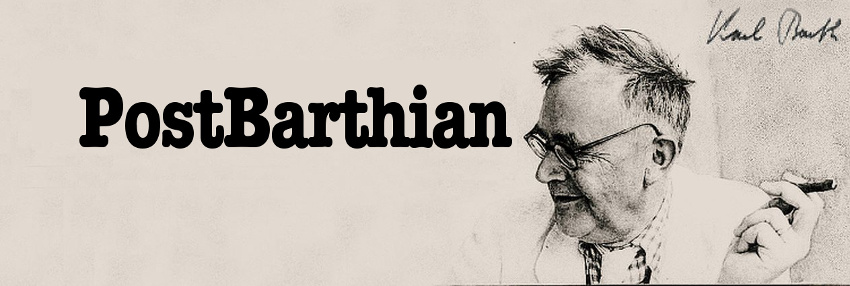 Ernst Käsemann argues that all four gospels are almost entirely ahistorical and unauthentic! It's a shocking conclusion, supported with a sound argument. It's shocking because are are obsessed with historical events, as if history may only be known through verifiable brute facts. The New Testament was not formed in the same way as a police officer gathers evidence from a crime scene, or how a detective analyzes police reports to solve a crime. Käsemann argues that the Gospels were formed in three phases for the purpose preaching about Jesus, and were not intended to withstand interrogation of modern historical criticism.
Ernst Käsemann argues that all four gospels are almost entirely ahistorical and unauthentic! It's a shocking conclusion, supported with a sound argument. It's shocking because are are obsessed with historical events, as if history may only be known through verifiable brute facts. The New Testament was not formed in the same way as a police officer gathers evidence from a crime scene, or how a detective analyzes police reports to solve a crime. Käsemann argues that the Gospels were formed in three phases for the purpose preaching about Jesus, and were not intended to withstand interrogation of modern historical criticism.
The Gospels were formed in three stages
In his book Essays on the New Testament, Käsemann summarizes the formation of the gospels in three phases: 1) the writing and transmission of individual sayings and isolated stories, 2) then these were collected together; and finally 3) these collections were weaved into the frameworks used by the gospel writers. Consequently, the events in the gospels and their ordering were invented for narrative purposes at the latest stage in the formation of the gospels, so the gospels cannot be used to establish to prove the historicity of the original events or their chronological ordering or their geographical occurrences.
The Synoptic Gospels as we have them today are the product of a tradition which was at least forty years in process of formation and the material of which is composed of very small units. At first it was individual sayings and isolated stories which were handed on; later, these were collected together probably for preaching purposes; this made it possible for the Evangelists, in a third and final stage, to set the appearances of Jesus on earth within a framework of space and time. [1]
The Gospels are ahistorical and unauthentic
Käsemann argues that the gospels are not only ahistorical, they are also unauthentic. Käsemann very little of the gospels historically happened in the way it is reported in the gospels, because the gospels were written for the purpose of preaching about Jesus, not reporting brute verifiable facts. Käsemann believes that the content of the New Testament was assembled for the point of preaching [kerygma], and almost all the preaching attributed to Jesus was originally preaching about Jesus that eventually became attributed directly to Jesus in such a way that almost none of the original words and events of the historical Jesus have been preserved in the gospels. Käsemann appeals to the long narratives in the Gospel of John to support his conclusion that almost none of the word of Jesus were actually spoken by Jesus, and therefore the overwhelming mass of the gospels consist entirely of ahistorical an unauthentic material.
From this standpoint it becomes comprehensible that this tradition, or at least the overwhelming mass of it, cannot be called authentic. Only a few words of the Sermon on the Mount and of the conflict with the Pharisees, a number of parables and some scattered material of various kinds go back with any real degree of probability to the Jesus of history himself. Of his deeds, we know only that he had the reputation of being a miracle-worker, that he himself referred to his power of exorcism and that he was finally crucified under Pilate. The preaching about him has almost entirely supplanted his own preaching, as can be seen most clearly of all in the completely unhistorical Gospel of John. [2]
Käsemann believes that the gospels are almost entirely unauthentic and ahistorical, because the gospel writers were not intending to provide authentic and historical material that should be interrogated by historical criticism. Instead he believes that the gospels were written for the purpose of preaching, and the material in the gospels exist because they were in service to the community's preaching. So Käsemann is not attacking the gospels, but trying to understand the gospels we possess without requiring the gospels to be verified by historical criticism. The gospels were written for the purpose of preaching [kerygma] and to cause faith to rise in the hearts of all who heard their good news.
It is thus quite impossible to extract from our Gospels anything resembling an historical sequence or even a biographical development and all efforts of this kind were, and remained, flight of fancy. Anything which could be used for such a purpose belongs to the later stage of tradition, and for the most part to the Evangelists' technique of composition. But of the individual sayings and stories it must be said that from their first appearance they were used in the service of the community's preaching and were indeed preserved for this very reason. It was not historical but kerygmatic [preaching] interest which handed them on. [3]
Criticism of Käsemann
Ernst Käsemann was a student of Rudolf Bultmann, and he often says things like "my teacher Bultmann" in his books to remind us of his impressive resume. Käsemann's argument follows the same conclusion as Bultmann that the historical event of Jesus' resurrection was not important, because what was and is important was the rise of the Easter faith that was born out of the early Christian community. And so, Käsemann's claim about the gospels being almost entirely ahistorical and unauthentic is an exaggeration of the evidence, and there are countless other theologians who agree that the historical events and their ordering described in the gospels are based in history and are authentic, even if they are not absolutely historical or entirely authentic. For instance, Karl Barth insisted that it was the resurrection of Jesus that happened and this event caused the rise of the Easter faith contra-Bultmann. I agree that there are elements in the gospels that are unauthentic and ahistorical, but I do not share Käsemann's thorough skepticism. I believe that the historical events and their orderings is accessible through the gospel's witness when we follow method's such as Wolfhart Pannenberg's Test for Historical Facticity.
If anyone is interested in finding the historical and authentic material in the gospels in a similar method as Kasemann's or the quest for the historical Jesus, then I recommend reading a fascinating book that was born from the Jesus Seminar by Robert Funk called The Five Gospels: What Did Jesus Really Say? The Search for the Authentic Words of Jesus, because it follows a similar method as Käsemann and is a scholarly attempt to determine which verses in the gospels were historical and authentic. I recommend reading it.
Sources:
1. Ernst Käsemann, Essays on New Testament Themes, "Is the Gospel Objective?", trans. W. J. Montague, (SCM Press, 1968: Great Britain), p. 59-60.
2. Ibid.
3. Ibid.
4. Header image background: source wikipedia.
Related: Ernst Käsemann, facticity, Gospels, Historical Criticism, Karl Barth, Käsemann, Kassmann, Rudolf Bultmann, The Quest of the Historical Jesus



August 10th, 2018 - 13:58
Is there not a good argument that Mark was a metaphorical retelling of Paul’s epistles? This of course does not do away with the basic thesis of this article but may inform it